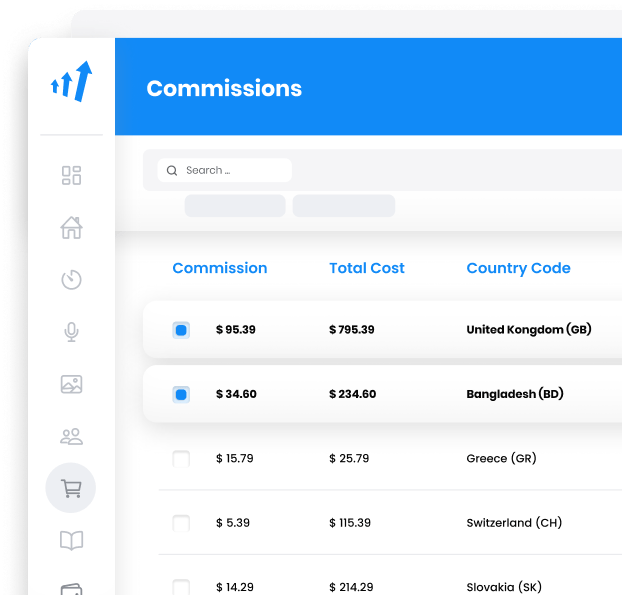What is a frequency capping?
Frequency capping is a digital advertising technique that limits the number of times an ad is shown to a single user within a specified timeframe. This strategy is crucial for managing ad exposure, preventing ad fatigue, and optimizing ad spend. By controlling the frequency of ad displays, advertisers can maintain user interest and avoid overwhelming potential customers with repetitive content.
Importance in Digital Advertising
In the realm of digital advertising, frequency capping serves as a safeguard against overexposure, ensuring that users are not bombarded with the same ads repeatedly. According to Pushground, this practice not only enhances user experience by reducing annoyance but also optimizes ad spend. By meticulously controlling ad exposure, brands can channel resources to audiences who have not interacted with their advertisements yet, broadening their reach and improving campaign performance.
Moreover, mFilterit highlights the importance of frequency capping in maintaining transparency in the digital advertising ecosystem. It addresses the challenge of a significant number of impressions being served on a small number of devices, particularly in mobile app and OTT environments where traditional cookie-based measurements are ineffective. By enforcing frequency caps, advertisers can ensure a wider reach and better engagement.
Importance in Affiliate Marketing
In affiliate marketing, frequency capping is vital for ensuring that affiliate ads do not become a nuisance to the audience. Affiliates rely on user engagement and conversions to earn commissions, and excessive ad exposure can lead to reduced effectiveness and a negative user experience. Frequency capping helps affiliates balance exposure and engagement, ultimately leading to better conversion rates and higher ROI.

Key Concepts and Terminology
Impressions
An impression is recorded each time an ad is displayed to a user. Monitoring impressions is essential for understanding how often an ad is shown and for setting appropriate frequency caps.
Cap Impression Frequency
This refers to the maximum number of times an ad is allowed to be shown to a user within a set period. For example, a frequency cap of 3 impressions per week means the ad will not be displayed more than three times to the same user in a week.
Ad Fatigue
Ad fatigue occurs when users become tired of seeing the same ad repeatedly, leading to decreased engagement and effectiveness. Frequency capping is a tool used to combat ad fatigue by limiting ad exposure. As noted by Pushground, minimizing ad fatigue contributes to a healthier return on advertising spend (ROAS).
Viewability Rate
The viewability rate measures the percentage of an ad that is visible to users out of the total number of times it was served. This metric is crucial for assessing whether ads are actually seen by the audience.
Creative Rotation
Creative rotation involves alternating different ad creatives within a campaign to keep the content fresh and engaging. This strategy works in tandem with frequency capping to prevent ad fatigue.
How Frequency Capping Works
Frequency capping functions by tracking the number of times an ad is served to a unique user and restricting further displays once the cap is reached. Here’s how it applies to different campaign types:
Display Campaigns
For display campaigns, frequency caps manage the number of impressions a user sees per day, week, or month. This ensures a wider audience reach without over-saturating specific users.
Video Campaigns
In video campaigns, frequency capping limits both the number of views and impressions. This is crucial for maintaining user engagement and avoiding ad fatigue, especially in retargeting scenarios.
Best Practices for Frequency Capping
Monitor Ad Viewability
Ensure that your ads are actually being seen by users. Use metrics like the viewability rate to adjust frequency caps and improve ad effectiveness.
Customize Caps Across the Customer Journey
Different stages of the customer journey may require varying frequency caps. For instance, lower caps are ideal for brand awareness campaigns, while higher caps may be suitable for retargeting efforts.
Utilize Creative Rotation
Regularly update and rotate ad creatives to keep the content fresh and engaging, reducing the risk of ad fatigue.
Consider Dayparting
Show ads at different times of the day when your target audience is most active. This strategy can optimize engagement and effectiveness.
Determining the Optimal Frequency Cap
Finding the right frequency cap involves analyzing data trends and adjusting based on performance metrics. Here are some considerations:
Campaign Goals
Your campaign’s objectives will influence the ideal frequency cap. Brand awareness campaigns may benefit from lower caps, while conversion-focused campaigns might require higher exposure.
Audience Behavior
Understand your audience’s tolerance for ad frequency. Different segments may have varying thresholds for ad fatigue.
Ad Performance Data
Regularly review metrics such as click-through rates (CTR) and conversion rates to adjust frequency caps accordingly.
Frequency Capping in Affiliate Software
Affiliate software platforms often integrate frequency capping features to help affiliates manage their campaigns effectively. These tools allow affiliates to set and adjust frequency caps, track impressions, and optimize ad spend. By leveraging these features, affiliates can ensure their ads are seen by the right audience at the right frequency, maximizing their potential for conversions.





